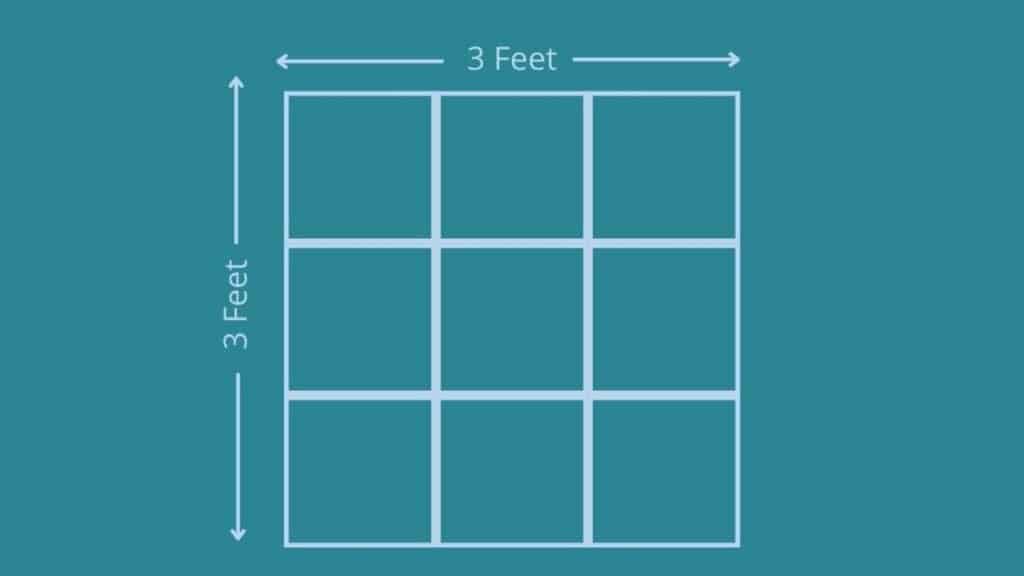
It’s not all about strength and speed when it comes to boxing. In fact, if thats what you’re looking for, strength and resistance training would only partially get you to where you want to be. Boxing requires your upper and lower body working together in order to be effective. So where can you start to improve your boxing footwork game?
Whether you want to box for fitness or as a profession. One of the basics you need to get good at is your boxing footwork. Being an effective boxer all starts with having good balance and feet movement. The right boxing footwork allows the boxer to throw punches with stability and strength as well as move swiftly across the ring.
Imagine watching a professional fight where a boxer is tripping over their own feet. Unable to stay balanced and planted in order to receive and return blows. They will likely not make it very far in their careers. To avoid this, here some exercises you can practice at home and get confident with your boxing footwork.
What Is Boxing Footwork?
Boxing footwork or just “footwork” is a termed used by boxers and coaches that refers to the movement of their legs and feet when boxing. While in training, boxers have various workouts that help improve their feet movement to allow them to move more quick and comfortably around whatever their target is in front of them.
Wondering what a boxing workout consists of? Read our article here.
Having proper footwork will improve a boxers balance and punch effectiveness. Having good balance allows your upper body to be more stable and able to move freely. Also being able to control your steps and foot movement gives you a better chance of throwing better punches at your target.
With all that taken into consideration, power and speed in your punch does not come from your arms, it all starts with your legs and feet.
What Are The Footwork Basics?
Before we talk about movement, you should have a good boxing stance. Having the proper stance would be the very first step and is the key to being an effective striker and a good defender. When boxing you should never go off balance when throwing a punch or when moving around on your own.
Boxer Stance
First you would need to find the correct boxing stance for you. The most common stance is the orthodox stance. Generally meant for fighters who are right handed or considered to throw a more powerful punch with their right hand. In contrast, if you consider your left hand is a more dominant. Then the southpaw stance would be what you’re looking for.
Here is some steps to help you get into your stance.
- What to do with your feet – stand with your feet slightly wider than shoulder length, being sure to stay on the balls of your feet. Your lead foot should be pointed slightly towards your target, while your back slightly behind you and toes facing the same direction. Keep your knees slightly bent.
- What to do with your hands – both hands should be in a fist and up infront of your face. Your lead hand – which is the hand that your throw your jabs with, will be slightly infront of your face with elbows extended. Your dominate hand will be closer to your face, by your jaw for protection.
- Keep your back straight and your body loose. Consider this as your “home” position. When striking you will move forward or even slightly to the side. After doing so, you should return to this position.
You can watch this video linked below to also get a visual on what we have talked about.
Boxing Movement (Footwork)
Now that we have your stance, we will bring together what some of the basics would be with your boxing footwork.
When moving forward, whether to strike or get closer to your target. You should always move forward with your lead foot first. Hence, lead foot. When stepping to the side, you should also be stepping with your lead foot first as long as you’re not crossing your two feet.
In other words, if your have an orthodox stance. Your lead foot would be your left foot. When you strike or move forward your left foot should be stepping first. When you’re stepping to your left side, your left foot would again be the first foot that is moving.
Mirror these steps if you have a southpaw stance. For example, as a southpaw, your lead foot is your right foot. When moving forwards or to the right you should be stepping first with your right foot.
As common practice you should be avoid what is discussed above. In doing so, you will cross your feet which can greatly increase your chances of going of balance and losing your footing. When trying to step the opposite direction of where your lead foot is meant to go. In this case, step with your back foot first. This would help keep your balance and give you no reason to adjust.
Boxing Footwork Drills
Like anything else, in order to master your boxing footwork, it’s all about practice, practice, practice. Boxers go through hours of training just for their footwork alone. Getting good at this skill is vital in elevating your boxing skills. Whether it’s for fitness or as a profession.
There are numerous ways in which you can train and improve your footwork. The good thing is you don’t need much or any special equipment to help you get practicing. There are some helpful tools you can buy that could help and are pretty inexpensive, but if you’re just starting out or a casual boxer you will likely not need it.
One simple way to begin practicing your foot work is by using tape and making a large 3×3 box. 3 boxes across and 3 boxes down. Each box about a foot tall and wide. Be sure to use a tape that won’t damage your floor.

Using this can help you visualize how your footing should be when in your boxing stance. And will even help you keep your movements clean and concise.
Another option you can practice your boxing footwork with is by using an agility ladder. You could probably get away with using tape again for this exercise, but by purchasing and using the agility ladder will help you save some time from taping up your floor every time you want to practice. Don’t worry this type of ladder is placed on the floor, not up against a wall.
With the agility ladder you can combine your boxing footwork along with your striking. This exercise is designed to manage your steps forward when throwing a jab or hooks. The idea would be to move up and down each rung of the ladder throwing your combinations. It’s an effective work out to practice for opponents who tend to back up in anticipation of an attack.
Lastly, a very simple option…shadowboxing. This workout should be routine for anyone who is involved in boxing. A very simple process of imagining a opponent in front of you and throwing punches and stepping aside as if it were a real match.
By shadowboxing you are essentially applying all you training together and practicing each move as if you were in a real fight scenario. A benefit of this is that you get a cardio workout along with some muscle toning at the same time.
Conclusion
To become a better fighter or receive the full benefits of a boxing workout. Your footwork should be as much part of your training as hitting a heavy bag. Mastering your boxing footwork helps unlock the strength and speed in your punches as well as keeping your form proper to avoid injuries. Overall, making you a more complete boxer.
